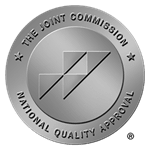What Crippling Depression Looks Like and What to Do About it
Each year, nearly 6% of U.S. adults experience a major depressive episode with severe impairment. This crippling depression, often referred to as major depressive disorder (MDD), is more than just a bad day or feeling down. It’s a heavy, overwhelming weight that can impact every aspect of life, making even the simplest tasks feel impossible. Below, we’re diving into what crippling depression looks like, its root causes, and how to manage it.

What is Crippling Depression?
Crippling depression is a severe form of depression that can disrupt your ability to function on a daily basis. As with other forms of depression, this is not a reflection of personal weakness or lack of willpower–it is a serious mental health disorder that can profoundly impact your emotions, thoughts, and behaviors.
People with crippling depression may experience an overwhelming sense of sadness or emptiness. Left untreated, this condition can lead to serious consequences, including physical health issues, relationship difficulties, and an inability to work or maintain responsibilities.
Symptoms of Crippling Depression
Crippling depression doesn’t look the same for everyone, but common symptoms include:
- Persistent feelings of sadness, emptiness, or hopelessness
- Loss of interest or pleasure in activities once enjoyed
- Fatigue or lack of energy, even after rest
- Difficulty concentrating or making decisions
- Changes in appetite or weight (either increased or decreased)
- Irregular sleep patterns, including insomnia or sleeping too much
- Feelings of worthlessness or excessive guilt
- Physical aches and pains without a clear medical cause
- Thoughts of death or suicide
If any of these symptoms sound familiar, it’s important to reach out for help. Recognizing these signs is the first step toward finding relief.
Causes of Crippling Depression
There isn’t a single cause of crippling depression–it’s often a combination of biological, psychological, and environmental factors.
Common factors contributing to crippling depression include:
Genetics
Having a family history of depression can significantly raise the likelihood of developing crippling depression. If your parents or siblings have experienced depression, you may have a genetic predisposition to the condition.
Brain chemistry
Imbalances in neurotransmitters, such as serotonin, dopamine, and norepinephrine, play a significant role in mood regulation, and can lead to depressive symptoms.
Trauma and life events
Experiencing abuse, neglect, or significant loss can leave lasting emotional scars that contribute to depression. Events like the death of a loved one, divorce, or job loss can also act as triggers.
Chronic stress
Prolonged exposure to stress from work, relationships, or financial struggles can overwhelm the body’s ability to cope. This constant state of “fight or flight” can exhaust your mental and physical resources, leading to depression.
Medical conditions
Certain illnesses, such as hypothyroidism, diabetes, or chronic pain conditions like fibromyalgia, are closely linked to depression. Hormonal imbalances or side effects from medications can also exacerbate symptoms.
Substance abuse
Alcohol and drugs can disrupt brain chemistry, amplifying feelings of sadness, hopelessness, or apathy. Over time, substance use can create a vicious cycle, where attempts to self-medicate only worsen depressive symptoms, making it harder to break free from the downward spiral.
How to Treat Crippling Depression
The good news is that there are many treatment options for crippling depression. While the journey to recovery may take time, there are effective ways to help you regain control of your life:
Therapy
Talking to a licensed therapist can help you explore the thoughts and feelings contributing to your depression. Cognitive-behavioral therapy (CBT) has been shown to be particularly effective in treating MDD.
Medication
Certain medications such as antidepressants may help correct chemical imbalances in the brain. A licensed medical professional can work with you to find the right medication and dosage.
Lifestyle changes
Engaging in regular physical activity, maintaining a healthy diet, and prioritizing sleep can significantly improve both mood and energy levels.
Support groups
Building connections with others who share your experiences can bring comfort and encouragement. Consider joining local support groups to connect with people facing similar challenges.
Holistic approaches
Practices like mindfulness meditation, yoga, and acupuncture are great compliments to traditional treatments, promoting relaxation, reducing stress, and supporting overall well-being. You can also add aromatherapy, sound healing, and herbal remedies to further support emotional balance and physical health.
7 Tips for Navigating Life With Crippling Depression
While professional treatment for crippling depression is crucial, there are everyday steps you can take to manage depression and build resilience:
1. Set small, achievable goals
If you’re feeling overwhelmed by your to-do list, try breaking tasks into smaller, more manageable steps. For example, instead of cleaning your entire home, focus on tidying one room or even just one corner. Achieving these smaller goals can create momentum and boost your confidence.
2. Practice self-compassion
Remind yourself that it’s okay to not be okay. Try to avoid self-criticism and treat yourself with the same kindness you would offer a friend. Journaling or positive affirmations can help shift your inner dialogue toward encouragement and understanding.
3. Create a daily routine
Establishing a daily schedule can provide structure to your day, making it feel more manageable. Incorporate time for both responsibilities and activities you enjoy. Even simple routines like waking up and going to bed at consistent times or setting aside 10 minutes for morning stretches can help to ground your energy and stabilize your mood.
4. Limit stress
Identify sources of stress in your life and consider ways to minimize them. This could mean learning to say no to additional responsibilities, practicing time management, or engaging in stress-reducing activities like deep breathing or listening to calming music.
5. Stay connected
Isolation can worsen depression, so make an effort to stay engaged with your community in ways that feel manageable, like texting a friend, joining a hobby group, or attending a virtual event. Don’t hesitate to lean on friends, family, or a trusted mental health professional for guidance and encouragement. Support groups, whether in-person or virtual, can also offer a safe and understanding space to share your experiences with others who can relate.
6. Focus on self-care
Incorporate activities that nourish your body and mind, such as eating healthy meals, staying hydrated, exercising, or spending time in nature. Even small actions, like enjoying a warm bath or listening to your favorite music, can improve your mood and energy levels.
7. Practice gratitude
Take a moment each day to reflect on something you’re grateful for, no matter how small. Beginning a gratitude practice can help shift your focus from what’s going wrong to what’s going right, fostering a more positive outlook over time.
Depression Treatment in Orange County, California
Need help loving life again? Barn Life Recovery’s licensed, clinical team and holistic treatment model allows our clients to explore how to accept and embrace the inevitable hurdles, trauma, and pain that accompany depression, in order to fully heal and triumph. Learn more about our intensive outpatient and partial hospitalization programs.










